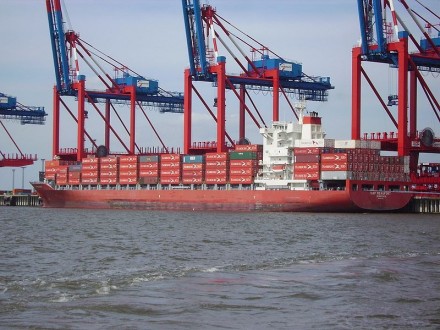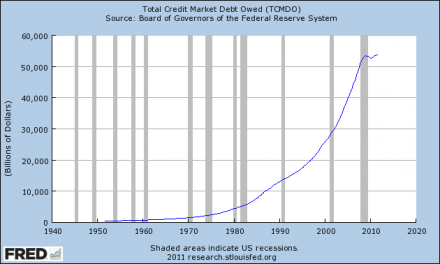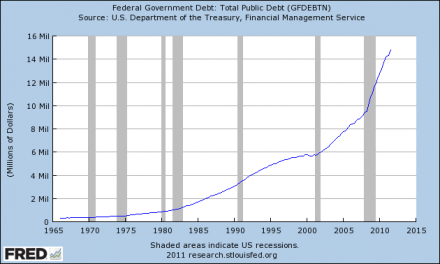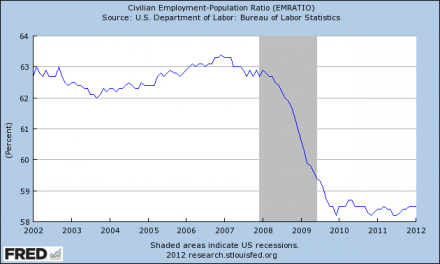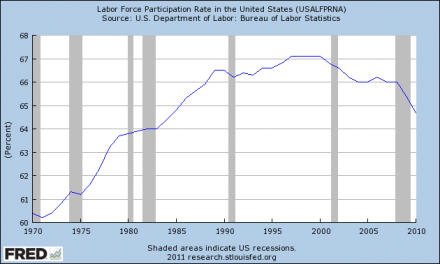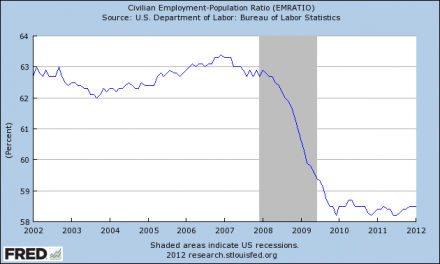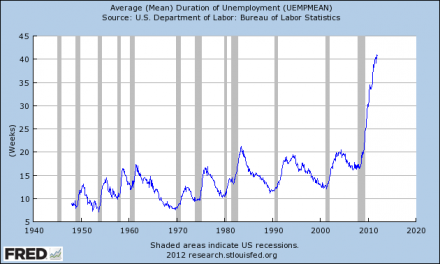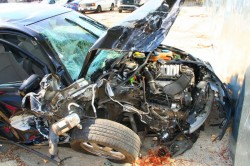 If the global economy is not heading for a recession, then why is global shipping slowing down so dramatically? Many economists believe that measures of global shipping such as the Baltic Dry Index are leading economic indicators. In other words, they change before the overall economic picture changes. For example, back in early 2008 the Baltic Dry Index began falling dramatically. There were those that warned that such a rapid decline in the Baltic Dry Index meant that a significant recession was coming, and it turned out that they were right. Well, the Baltic Dry Index is falling very rapidly once again. In fact, on February 3rd the Baltic Dry Index reached a low that had not been seen since August 1986. Some economists say that there are unique reasons for this (there are too many ships, etc.), but when you add this to all of the other indicators that Europe is heading into a recession, a very frightening picture emerges. We appear to be staring a global economic slowdown right in the face, and we all need to start getting prepared for that.
If the global economy is not heading for a recession, then why is global shipping slowing down so dramatically? Many economists believe that measures of global shipping such as the Baltic Dry Index are leading economic indicators. In other words, they change before the overall economic picture changes. For example, back in early 2008 the Baltic Dry Index began falling dramatically. There were those that warned that such a rapid decline in the Baltic Dry Index meant that a significant recession was coming, and it turned out that they were right. Well, the Baltic Dry Index is falling very rapidly once again. In fact, on February 3rd the Baltic Dry Index reached a low that had not been seen since August 1986. Some economists say that there are unique reasons for this (there are too many ships, etc.), but when you add this to all of the other indicators that Europe is heading into a recession, a very frightening picture emerges. We appear to be staring a global economic slowdown right in the face, and we all need to start getting prepared for that.
If you don’t read about economics much, you might not know what the Baltic Dry Index actually is.
Investopedia defines the Baltic Dry Index this way….
A shipping and trade index created by the London-based Baltic Exchange that measures changes in the cost to transport raw materials such as metals, grains and fossil fuels by sea.
When the global economy is booming, the demand for shipping tends to go up. When the global economy is slowing down, the demand for shipping tends to decline.
And right now, global shipping is slowing way, way down.
In fact, recently there have been reports of negative shipping rates.
According to a recent Bloomberg article, one company recently booked a ship at the ridiculous rate of negative $2,000 a day….
Glencore International Plc paid nothing to hire a dry-bulk ship with the vessel’s operator paying $2,000 a day of the trader’s fuel costs after freight rates plunged to all-time lows.
Glencore chartered the vessel, operated by Global Maritime Investments Ltd., a Cyprus-based company with offices in London, Steve Rodley, GMI’s U.K. managing director, said by phone today. The daily payments last the first 60 days of the charter, Rodley said. The vessel will haul a cargo of grains to Europe, putting the carrier in a better position for its next shipment, he said.
So why would anyone agree to ship goods at negative rates?
Well, it beats the alternative.
This was explained in a recent Fox Business article….
“They’re doing this because you can’t just have ships sitting. If they sit too long, then that’s hard on the ships. They have to keep them loaded and moving from port to port,” said Darin Newsom, senior commodities analyst at DTN.
If the owner of a ship can get someone to at least pay for part of the fuel and the journey will get the ship closer to its next destination, then that is better than having the ship just sit there.
But just a few short years ago (before the last recession) negative shipping rates would have been unthinkable.
Asian shipping is really slowing down as well. The following comes from a recent article in the Telegraph….
Shanghai shipping volumes contracted sharply in January as Europe’s debt crisis curbed demand for Asian goods, stoking fresh doubts about the strength of the Chinese economy.
Container traffic through the Port of Shanghai in January fell by more than a million tons from a year earlier.
So this is something we are seeing all over the globe.
Another indicator that is troubling economists right now is petroleum usage. It turns out that petroleum usage is really starting to slow down as well.
The following is an excerpt from a recent article posted on Mish’s Global Economic Trend Analysis….
As I have been telling you recently, there is some unprecedented data coming out in petroleum distillates, and they slap me in the face and tell me we have some very bad economic trends going on, totally out of line with such things as the hopium market – I mean stock market.
This past week I actually had to reformat my graphs as the drop off peak exceeded my bottom number for reporting off peak – a drop of ALMOST 4,000,000 BARRELS PER DAY off the peak usage in our past for this week of the year.
I would encourage you to go check out the charts that were posted in that article. You can find them right here. Often a picture is worth a thousand words, and those charts are quite frightening.
Over the past few days, I have been trying to make the point that nothing got fixed after the financial crisis of 2008 and that an even bigger crisis is on the way.
Yes, the stock market is flying high right now.
Yes, even “Dr. Doom” Nouriel Roubini is convinced that the stock market will go even higher.
But this rally will not last that much longer.
Wherever you look, global economic activity is slowing down. The UK economy and the German economy both actually shrank a bit in the fourth quarter of 2011. About half of all global trade involves Europe in one form or another. As Europe slows down, it is going to affect the entire planet.
Many thought that the German economy was so strong that it would not be significantly affected by the problems the rest of Europe is having, but that is turning out not to be the case.
In a new article by CBS News entitled “German economic slowdown worse than expected?“, we are told that industrial production in Germany is declining even more than anticipated….
German industrial production fell 2.9 percent in December from the month before, according to official data released Tuesday, suggesting the country’s economic slowdown could be worse than expected.
So don’t believe all the recent hype about an “economic recovery”. Europe is heading into a recession, Asia is slowing down and the U.S. will not be immune.
Despite what you hear from the mainstream media, the truth is that the U.S. economy is not improving and incredibly tough times are ahead.
Thankfully, those of us that are aware of what is happening can make preparations for the economic storm that is coming.
Others will not be so fortunate.
